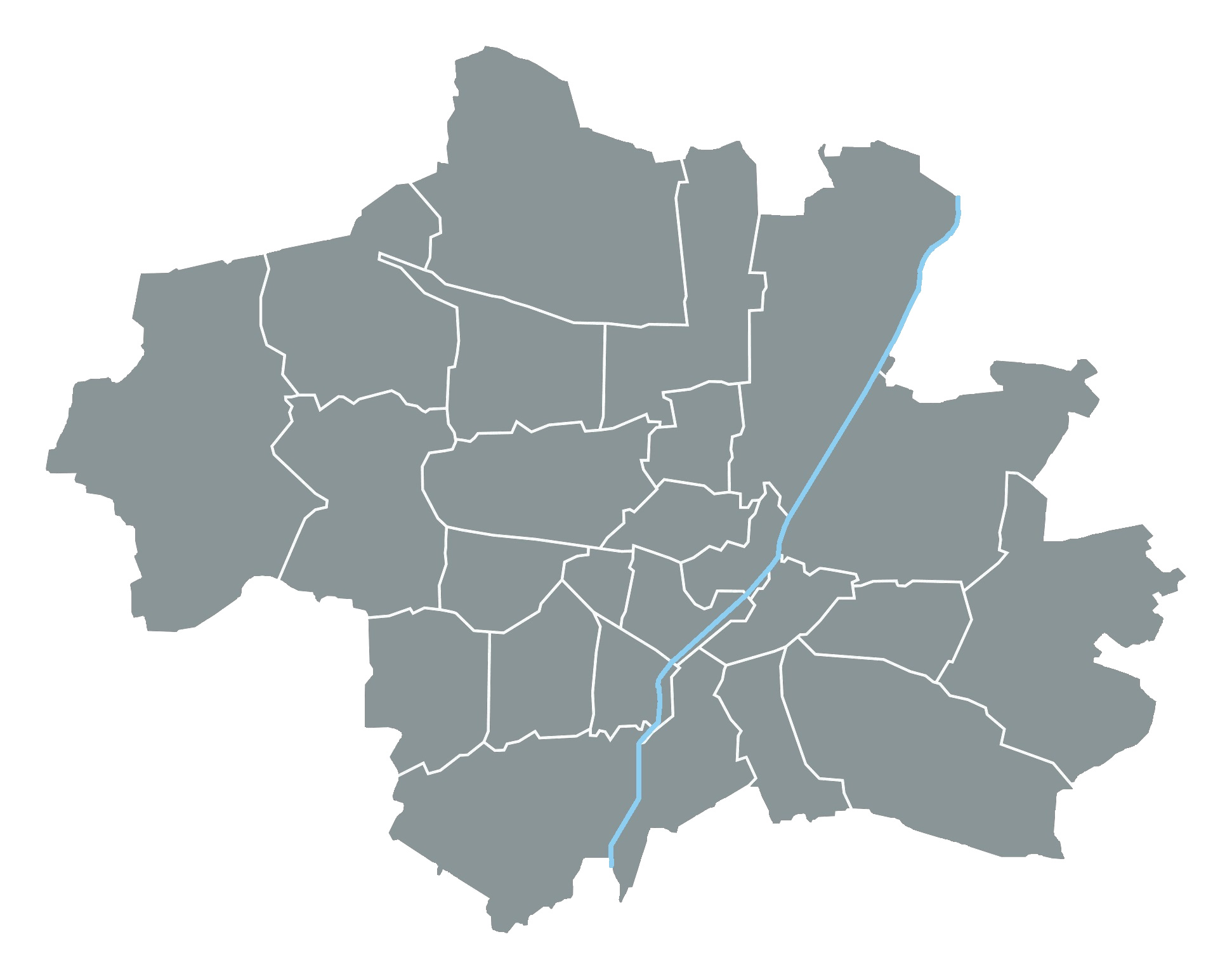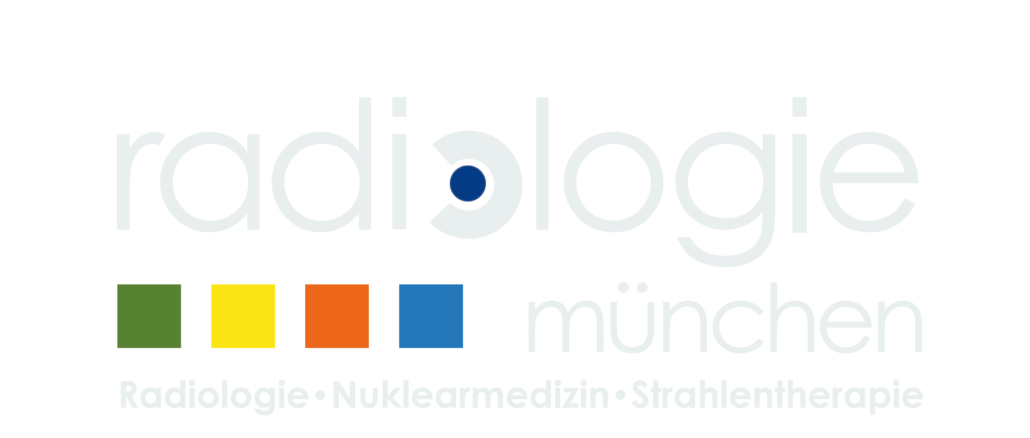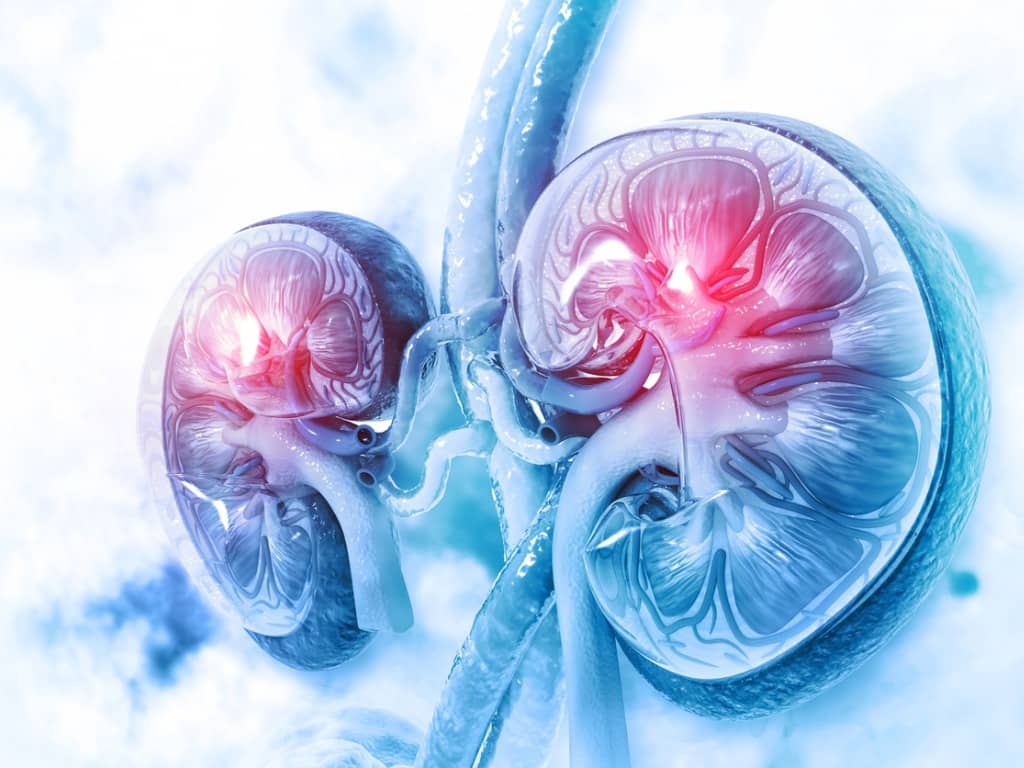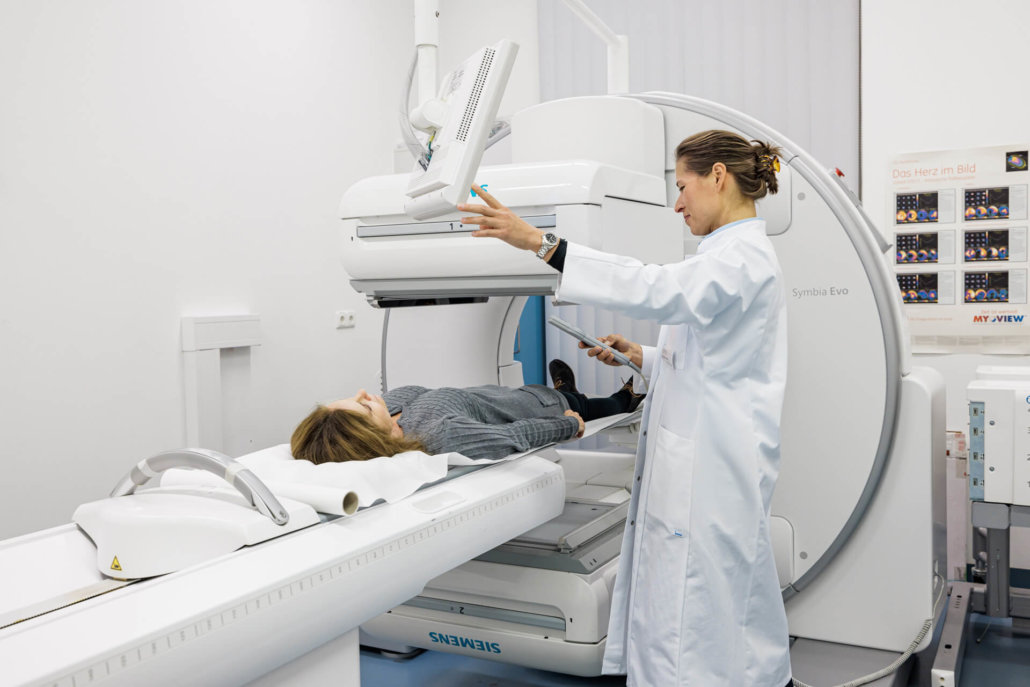Scintigraphy of the kidney
There are several types of renal scintigraphy. In the most frequently performed so-called MAG3 scintigraphy, tubular renal function is examined. DTPA scintigraphy of the kidneys examines the glomerular filtration rate. This examination is now performed almost exclusively in children.
The third type of examination, DMSA scintigraphy, looks for parenchymal defects. These can be caused by space-occupying lesions and scars. This examination can also be used to very accurately determine the lateral distribution of renal output.
approx. 45 min
Duration of examination
48 hours
no other renal contrast medium beforehand
< 40 %
the annual natural amount of radiation per scintigraphy
Where can you have a scintigraphy of the kidney performed in Munich?
We offer renal scintigraphy with MAG3 at our nuclear medicine site in the Rotkreuzklinikum, Nymphenburgerstr.163. Scintigraphies with DTPA and DMSA are not in the standard program, but after consultation it is possible to perform them at the above address.

Renal scintigraphy with MAG3
MAG3 scintigraphy dynamically measures tubular function. The weakly radioactive 99mTc-mercaptoacetyltriglycerolis used.
Are radiopharmaceuticals used dangerous?
approx. 2.1 millisievert
natural radiation exposure in Germany
The agents used in all renal scintigraphies are weakly radioactive. The radiation intensity is about 0.8 mSv (millisievert). This corresponds to one third of the natural radiation exposure per year in Germany.
What can be diagnosed during renal scintigraphy?
This examination is used to diagnose various kidney diseases. With MAG3 scintigraphy, we determine the side-separated renal function as well as the outflow very precisely. This is very important pre-therapeutically or during the individual phases of surgical or conservative therapy:
- Narrowing of the ureter at the outlet from the renal pelvis or at the opening into the urinary bladder (urinary retention, outflow obstruction)
- Bladder dysfunctions
- Complicated double kidneys (power distributions)
- Post-traumatic conditions (loss of function)
- Reflux Nephropathies
- Side distribution of kidney function
- Clarification of hypertension “captopril scintigraphy”.
- Control after transplantation
- Before PRRT “DOTATATE” therapy (sufficient function required).
- Before planned kidney removal to check the remaining function of the (healthy) other kidney.
- Before living kidney donation
What do you need to know before the treatment?
Ideally, 48 hours before renal scintigraphy, no other examinations with intravenous contrast should be performed.
You do not have to be sober for the examination. Before the examination, you should have drunk enough and before the start of the examination, the bladder must be completely emptied.
The examination takes place while the patient is lying down.
What is the procedure for a kidney scintigraphy at Radiologie München?
Informative talk & injection
Prior to the examination, you will have a detailed educational discussion with our nuclear medicine physician. We will inform you about the procedure of the examination and will also be happy to address your complaints, questions and fears. Following the consultation, we inject the radioactive agent required for the examination via a vein in the arm.
Actual investigation
During the renal function examination with MAG3, you will lie on the gamma camera for 20 minutes. Then, based on the images acquired up to that point, a decision is made whether a diuretic needs to be injected, which prolongs the examination by 10 min. In addition, a blood sample is taken. The diuretic provides a stimulus to the kidneys to increase excretion. The response to this stimulus indicates whether the delayed outflow is still compensated or already clinically relevant.
After that, you will be asked to go to the toilet and empty your bladder, then a final short shot will be taken and the examination is over. The images are now evaluated, which also requires an activity measurement of your blood sample. It takes about 20 – 30 min for this to be completed.
What are the risks and side effects of renal scintigraphy?
The examination is completely painless. There are usually no side effects from the radiopharmaceutical. The radiation exposure is far below that of an X-ray examination of the kidneys with contrast medium. Thanks to the low radiation exposure, the examination is possible even in infants and children. In this case, the dose of the radioactive substance is naturally set lower (weight-adjusted).


